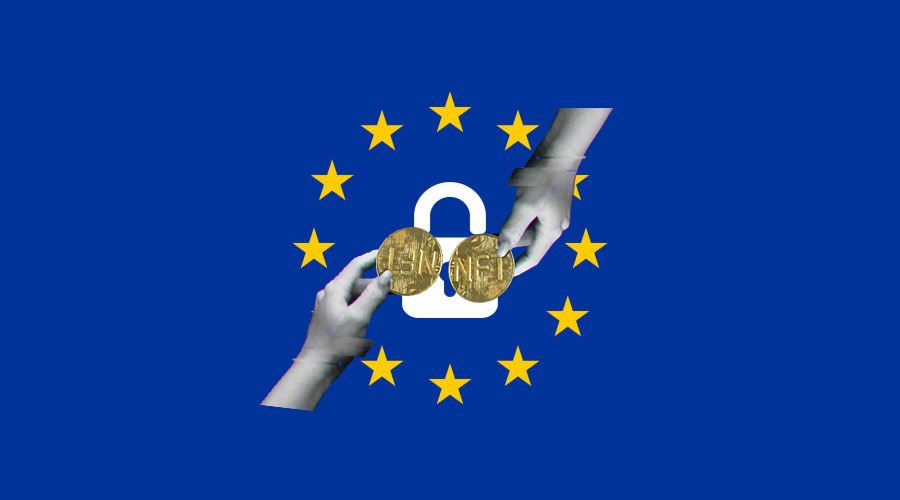Within the cryptocurrency community, there is an ongoing philosophical discussion over the proper function of government. The issue for an investor, though, is what to do because cryptocurrency is to some extent controlled.
A unified framework for regulating cryptocurrency would be helpful. This legal latitude allows cryptocurrency businesses to innovate and expand quickly, but it also means that hazardous business practices that expose customers to danger might go unchecked.
The main purpose of cryptocurrency was to operate independently of institutional intermediaries. The mission statement for Bitcoin reads, “What is needed is an electronic payment system based on cryptographic proof instead of trust, allowing any two willing parties to transact directly with each other without the need for a trusted third party.” Therefore, the fact that the government is even participating could surprise you.
However, a lot of people engage in peer-to-peer bitcoin interactions through institutions. The kinds of centralized organizations that Bitcoin was intended to avoid include crypto-specific exchanges that offer custodial services or crypto payment services, yet users have flocked to this practical entry point to cryptocurrency ownership. More conventional banking institutions are entering the cryptocurrency market. Much of the regulatory focus is on the area where cryptocurrencies and financial services companies cross.

There are numerous organizations that regulate the conventional financial system, which is nothing new. But the issue presented by bitcoin is new.
Jimmie Lenz, director of Duke University’s Master of Engineering in Fintech program and leader of the Digital Asset Research and Engineering Collaborative, claims that they are attempting to fit a square peg into a round hole. “A really special asset class is cryptocurrency. It is exchanged in a highly distinctive manner in addition to being a unique asset type.
In a 2022 study, the Financial Stability Oversight Council listed its top three regulatory deficiencies relating to cryptocurrencies:
Spot markets have no regulations. Spot markets, where money is exchanged promptly for assets, are governed by rules that encourage “orderly and transparent trading” and “prevent conflicts of interest and market manipulation.” Outside of that regulated by the government playing field, cryptocurrency exchanges exist.
Regulatory hedging. Cryptocurrency isn’t thoroughly regulated, so anyone who find many laws for the same kind of behavior might theoretically game the system. For instance, a cryptocurrency company might set up subsidiaries in a number of different countries, making it impossible to fully comprehend the level of risk it faces overall. Traditional banks that provide comparable services, however, are subject to more scrutiny.
Coordinated services. The typical retail investor follows a clearly laid out process when purchasing a stock or mutual fund. Each transaction, which can take a day or two to complete, involves numerous companies by design. This procedure functions like a ship’s compartments, each of which is watertight: Damage that happens in one area can be limited elsewhere by the process itself. On the other hand, a crypto exchange can handle many of these dispersed tasks on its own. While it can lead to a quicker settlement, there might also be increased danger.
The system can be stabilized by financial laws, and many of them are now so ordinary that it is difficult to imagine life without them.
For instance, the Federal Deposit Insurance Corp. will protect each savings account up to $250,000. A subtle but effective buffer that prevents bank runs is the knowledge that savings are secure even if your bank collapses. Up to $500,000 in brokerage accounts are protected by the Securities Investor Protection Corp.
In the realm of cryptocurrencies, there is no equivalent. In 2022, the cryptocurrency company Celsius filed for bankruptcy, freezing billions in customer holdings. Customers are still attempting to obtain whatever may be left several months later. Some businesses may obtain private insurance to guard against severe events, although it may only cover a percentage of the assets it holds for clients and lacks the broad coverage of SIPC or FDIC insurance.

The European Union appears poised to adopt its historic crypto laws after more than 2.5 years of discussions and revisions.
Voting on the full set of new regulations is scheduled for the week of April 17.
Markets in Crypto Assets (MiCA) is a component of a larger EU package designed to modernize the bloc’s strategy on a number of digital financial fronts. The MiCA focuses on the duties that crypto-asset issuers will need to disclose. Additionally, it imposes strict guidelines for stablecoin operators.
But more crucially, it harmonizes the strategy among the 27 member states.
But the narrative is far from over after this month’s vote.
Countries have up to 18 months to implement reforms after they receive approval from the European Parliament. The EU’s securities authority, ESMA, will work out the specifics of how MiCA should be implemented.
However, it is a significant turning point for cryptocurrency globally, not just in Europe.
Foreign-based businesses will be impacted if they want to serve EU clients, and financial commissioner Mairead McGuinness has expressed excitement about exchanging ideas with her American counterparts.
“It’s very political,” explains Marina Markezic, co-founder and executive director of the European Crypto Initiative, a business coalition established in opposition to the MiCA proposal. “The Brussels effect” states that Brussels believes it is developing very good standards that should ultimately be spread to other countries.

The “crypto asset service providers”—also known as CASPs—are a large category of business for which MiCA is concerned with establishing regulations.
This includes businesses doing a wide range of things, such as running a trading platform, providing custody, marketing new assets, and giving cryptocurrency advice.
Anyone wishing to publicly offer a crypto asset must create a white paper that contains information about it in accordance with MiCA. This will include details about the issuer or the party seeking to list it on the market, what they want to do with the money they raise, the rights and liabilities associated with the asset, and the underlying technology.They must also be honest about any potential dangers associated with investing.
The asset issuer may be the CASP responsible for producing this in some circumstances, but it may also be the trading platform that is providing the asset to consumers in other circumstances.
White papers are a common notion in the crypto world, but Sam Tyfield, a corporate M&A attorney at the British firm Shoosmiths, claims that the EU regulations will require a much more stringent, uniform approach.
Tyfield claims, based on his experience of expanding and changing a draft white paper to make it ostensibly MiCA-compliant, that “the amount of information and data required to do so is materially beyond current market practice for white papers and a significant challenge for most potential issuers of crypto-assets or tokens.”
The tightening of stablecoin regulations is another key element of MiCA. The proposals require issuers to keep a reserve of assets to back the tokens. They need to be invested in low-risk methods and kept separate from their personal assets. Additionally, EU lawmakers allow for the application of stricter regulations, such as increased capital requirements, to large-scale stablecoin issuers.
However, central bank digital currencies (CBDCs), which are exempt, won’t be impacted by such regulations. Long-time observers have highlighted that MiCA’s roots, as a response to Facebook’s now-defunct Diem (formerly known as Libra) project, are rooted in worries about a non-government currency gaining traction in the area.
Wolf-Georg Ringe, director of the Institute for Law & Economics at the University of Hamburg, stated in a letter shortly after regulations were first proposed that “reading between the lines, the proposal shows the fear of losing monetary sovereignty to private actors, and it is no coincidence that a few days after the Commission’s proposal was published, the ECB [European Central Bank] launched its initiative for a digital Euro.”
NFTs are a prominent absence from MiCA.
The necessity to create a white paper expressly excludes assets that are “unique and not fungible, including digital art and collectibles.”
The potential of assets issued “in a large series or collection” being regarded as fungible is raised by further textual explanation. This, according to experts, may have an influence on large-scale initiatives like Bored Apes Yacht Club (BAYC) and CryptoPunks, whose magnitude affects their claims of originality.
This is one of the issues that ESMA’s rules will probably resolve.
Other facets of digital banking are also not covered under MiCA, but some people are hopeful that they will be in subsequent iterations or other pieces of law.
Staking is the most notable technology to have developed since MiCA was formed, according to Nick Taylor, head of public policy for EMEA at cryptocurrency exchange Luno. “Following the changeover to proof-of-stake systems, more cryptocurrency companies are now aiming to include this in their value offer, but MiCA guidelines on its use have not yet been established. Future iterations of MiCA might also take into account lending, NFTs, and DeFi.
Top European institutions have already highlighted restrictions on the regulation. A member of the advisory board of the European Central Bank stated last week that the recent advancements in regulation were insufficient.
Elizabeth McCaul, a member of the ECB supervisory board, stated in a blog post that companies like Binance and the now-defunct FTX would probably not be deemed “significant” under MiCA in its current form and that the entire operation of a company needed to be taken into account, not just the scope of their presence within the EU.

The EU Crypto Initiative has been particularly concerned about how start-ups will manage the extra regulatory load since MiCA was initially mooted.
According to Cissey of Flowdesk, their organization is “90% of the way there” in terms of MiCA preparation. But she believes that any new competitors will start out by looking elsewhere. She said, “If I wanted to start a new project, I would do it in the Bahamas, Cayman Islands, or the BVI.”
This form of “regulatory shopping” is most certainly already taking place, according to Dion Seymour, technical director for crypto and digital assets at tax advice firm Andersen LLP. As with any small business, some of the smaller enterprises in particular frequently find it difficult to comply with the laws that are imposed on them, necessitating the hiring of expensive regulatory lawyers, according to Seymour.
On the plus side, a coordinated strategy will create chances for any business that can adapt to the new regulations.
They can be passported throughout the rest of the Union once they have received approval in one nation.
The nicest aspect of MiCA, in Markezic’s opinion, is that it allows for access to the entire EU market. “Right now, the situations in each of the member states are very, very different. It’s really challenging to just comply in certain places where there are some regulations and none in others. A coordinated European approach has many benefits for larger enterprises.
Similar to Przemyslaw Kral, CEO of the Polish cryptocurrency exchange Zonda, is optimistic. “While MiCA will undoubtedly present a challenge for some of the smaller crypto startups, I predict the overall effect will be positive,” he claims.
According to Kral, institutional investors and larger companies are drawn to the regulatory stability and clarity that MiCA offers, which has improved investment and growth potential in the European crypto sector.
What effects will all of this have?
Although we cannot predict the future, we can all agree that the current state is unsustainable.
Of fact, since both sides have numerous arguments, no one can definitively say what the perfect degree of regulation would be.
However, we can be certain that a centralized regulatory framework that does not significantly weaken decentralization but nonetheless adds some structure to the world of cryptocurrencies will be to our long-term advantage and, I am confident, will aid in the widespread use and acceptance of crypto in society.
To sum up, we require uniform policies to promote the acceptance and adaptability of cryptocurrency. We can only hope that they won’t go too far with these legislation.
AMG is a decentralized autonomous organization, bridging the gap between players and web3 game developers, bringing the next billion users into the metaverse.
AMG acquires non-fungible tokens (NFTs) used in blockchain-based games and acts as a trusted party advocating for games in the metaverse, thus bringing more people in.
We are leveraging strong partnerships with games developers and Yield Guild Games to launch our organization to the forefront of the Central/Eastern European gaming market.
AMG DAO has been building a game-focused crypto wallet, guild management, and other tools to keep contributing to the ecosystem, in order to aid the creation of games with sustainable economies.
AMG DAO Social Media Links: